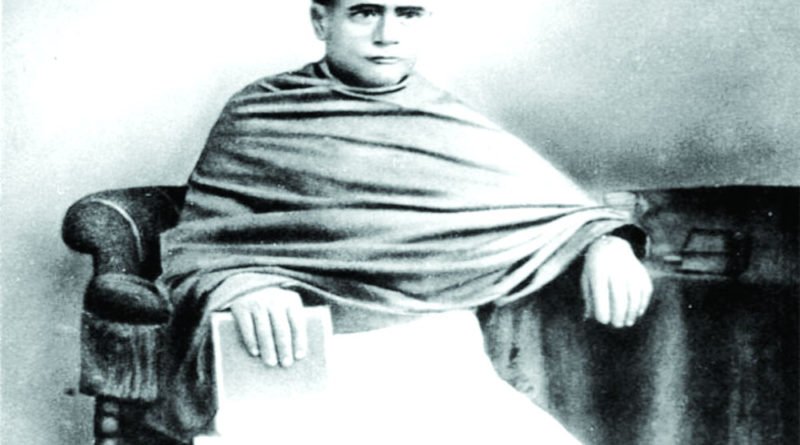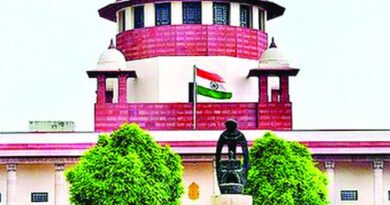Two oceans in one
From his struggle for legalising widow remarriage to his emphasis on women’s education, Ishvarchandra Vidyasagar laid the foundations of modern India
How many people remembered on September 26 (last Saturday) that it was the 200th birth anniversary of Ishvarchandra Vidyasagar — as the correct English rendering of his name, as spelt in Bengali, would be? One of the greatest Indians ever born, much has been written about his contributions as a scholar, educationist, social reformer and writer. As early as 1841, Sanskrit College — now Sanskrit College and University — in Kolkata (then Calcutta), had conferred upon him the honorific title of Vidyasagar (Ocean of Learning) for his vast knowledge of classical Sanskrit texts and philosophy. He wrote two books on Sanskrit Grammar — Samagra Byakaran Kaumudi and Upakramonika — in Bengali, and translated several books from Sanskrit into Bengali.
Instead of seeking laurels for himself, he dedicated his life to spreading education. In 1864, Calcutta Training School, established by Thakurdas Chakraborty in 1859, came to be known as the Metropolitan Institution, which, in turn, was subsequently recognised by the University of Calcutta (Now Kolkata) as an affiliated college —the first Indian-managed private institution to be given this status. Saradaranjan Ray, a great mathematician whose exploits as a batsman led him to be called “WG Grace of Bengal”, was an early principal; Surendranath Banerjee, stalwart national leader and a founder of the Indian National Congress, was a teacher. The institution, which owed its remarkable growth and expansion mainly to the tireless efforts of Isvarchandra, was named Vidyasagar College in 1917.
An educationist described by Rabindranath Tagore as Bengal’s first Shikshaguru (preceptor of education), Vidyasagar had also opened schools in villages because he believed that sans education the country could neither progress nor become independent. His special emphasis was on children’s and women’s education. Even now, many children learn the alphabets and the fundamentals of Bengali language from his primer Bornoporichoy (Introduction to Letters) first published in 1855. His Kathamala (Garland of Stories) is perhaps the best-known collection of folk tales — each with a moral message — for children. Compiled from several English sources, Bodhoday (Dawn of Understanding) was meant to initiate the readers, particularly boys and girls, into a rational system of knowledge, providing basic ideas about animate and inanimate objects, vegetation, humankind, the senses, shapes and forms of objects, counting numerals, buying and selling, monetary systems and property and labour.
His efforts to promote women’s education, manifested among other things in the opening of a number of schools for them, was based on his firm belief that women were equal to men but suffered grave injustices and inequalities. This, he felt, had to be fought. His unflagging struggle for legalising widow remarriage, in support of which he cited Hindu scriptural texts, particularly the Parasarsanghita and the Manusanghita, led to the passage of the Hindu Widows’ Remarriage Act (Act XV) on July 16, 1856. His exertions led to the enactment of the Female Infanticide Prevention Act (Act VIII) on March 18, 1870, and the Age of Consent Act (ACT X) on March 19, 1891. The title of the first of the above two Acts speaks for itself; the second, passed a little more than six months before his death, raised the minimum marriageable age of girls from 10 to 12 years. His best efforts failed to get an Act enacted for banning hypergamous polygamy, especially of the Kulin Pratha or the Kulin system. Under it, descendants of the five Brahmin families from Kannauj, brought to Bengal at the time of king Laxman Sen (1178-1206), commanded great value in the marriage market and had numerous wives, some of them mere girls. But the moral stigma the evil acquired, thanks to the campaign led by Vidyasagar, tapered it down to an end.
Vidyasagar was a rational humanist whose cerebral psyche went with limitless compassion and a generosity of spirit that instinctively prompted him to help out the straitened and suffering. This had led him to be called “Karunasagar” or “Dayar Sagar” (both meaning an Ocean of kindness) — Karunasagar Vidyasagar is the title of Indra Mitra’s well-researched biography of him — by public acclaim. The cue perhaps came from the famous poem dedicated to him by Michael Madhusudan Dutt whom he had bailed out when the iconic Bengali poet was in severe financial distress.
It would be worthwhile to quote the first four lines of the poem rendered in English alphabet for this column: “Vidyar sagar tumi bikhyato Bharate/ Karunar shindhu tumi, shei jane mone,/ Deen je, deener bondhu! Ujwal jagate/ Hemadrir hem-kanti, amlan kirone.” Its rough English translation would be, “You are famous in India as an Ocean of Learning/ That you are an Ocean of Kindness is known/ Only to the poor, friend of the Poor! Shining worldwide/ In the unfading golden light of the golden mountain.”
Vidyasagar wrote the first definitive grammar that gave form, structure and a highly Sanskritised but intelligible and fluent mode of expression to the Bengali language. Earlier, the latter was used mainly in Chandidas’ songs on the love between Radha and Krishna, Krishnadasa Kaviraja’s Chaitanya Charanamrita, a hagiography on the life of the medieval saint, Chaitanya Mahaprabhu, versified renditions of the Mahabharata and the Ramayana in Bengali by Kashiram Das and Krittibas Ojha respectively, Ramprasad’s devotional songs, Bharatchandra’s poetry and Ramram Basu’s prose.
The groundwork laid by Vidyasagar was built upon by the chaste literary language of Bankimchandra Chattopadhyay, the distinct style evolved by Rabindranath Tagore, the use of colloquial Bengali by Peary Chand Mitra, author of Alaler Gharer Dulal (A Wealthy Family’s Pampered Boy), and the easy prose of Kaliprasanna Singha’s Hutom Pyanchar Naksha (Sketch by the Owl), both, in their own ways satirical depictions of affluent mid-19th century Kolkata, and Upendrakishore Ray’s simple language meant for children. The result of the interactive and mutually influencing styles and forms led to the emergence of Bengali as a powerful medium of complex and varied articulation in diverse areas like criticism, analysis and argumentation.
An important result of this was the emergence of the essay both as a literary format and a tool of discourse. Besides Rabindranath Tagore and Bankimchandra Chattopadhyay, its two other important exponents were Akshay Kumar Boral and Ramendra Sundar Tribedi. Vidyasagar’s two tracts supporting widow remarriage were outstanding pieces, which were more in the nature of long essays than books. It was not just the essay. The evolved Bengali language made possible the production of path-breaking works in it in social, political, philosophical, theological and cultural domains, which made a significant contribution to the unfolding of the Bengal Renaissance.
Like the European Renaissance, which stretched from the late 14th to the late 18th century, the Bengal Renaissance, which had unfolded from the first half of the 19th century and waned gradually in the first half of the 20th, was the result of a multiplicity of factors — the coming of British rule; the introduction of Western education through the medium of the English language; the creation of a strong zamindari system through the implementation of Permanent Settlement; the rise of a trading class from the ranks of the banyas (agents) of the East India Company and its servants, who and others benefitted from the expansion of trade and commerce under British rule; and the rise of a growing bureaucracy to cater to the administrative needs of the East India Company’s expanding regime.
A critically important factor was the emergence of the Bhadralok. In Elite Conflict in a Plural Society: Twentieth Century Bengal, JH Broomfield has described the Bhadralok as “a socially privileged and consciously superior group, economically dependent on landed rents and professional and clerical employment.” He carefully distinguished between the Bhadralok and the middle class. According to him, the Bhadralok were upper and not middle class, if class was taken as a status group after Talcott Parsons. For the category did not include many middle-class elements in the Marxian sense of the latter being an economic group, while encompassing persons from both higher and lower classes.
As a status group, the Bhadralok constituted an elite, which, in turn encompassed several elites comprising landlords, businessmen, government employees as well as professionals like lawyers, doctors, and teachers. They became flag bearers of the Bengal Renaissance through not only their personal achievements but contribution to processes like the spread of education which extended the reach of the Renaissance. Their role in this context was much greater than that of Europe’s emerging bourgeoisie in furthering the European Renaissance.
The many-splendoured achievements of the Bengal Renaissance transformed the province’s intellectual life and was instrumental to the advent of modernity in Bengal, and then India. Vidyasagar’s strivings in multiple fields were a significant factor in its waxing. He was one of the greatest Indians who ever lived.
(The writer is Consultant Editor, The Pioneer, and an author)
Source: The Pioneer




